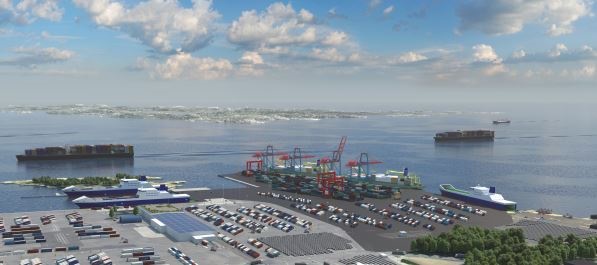Sweden: Green light for Port of Gothenburg terminal expansion

A major expansion at the port of Gothenburg designed to absorb increasing seafreight volumes in Europe has been given the go-ahead.
The construction of a new terminal at the outer port area will be the largest expansion project at the port since the 1970s. It is expected to start next year and be completed at some point after 2020.
The terminal construction will expand Gothenburg into a logistical hub for Europe and absorb increasing freight volumes in the future, although it is not yet clear exactly what type of goods the terminal will handle.
The area will be 220,000 square meters and will involve an investment of approximately SEK1 billion (US$117.3 million).
The Land and Environment Court has granted the Port of Gothenburg consent to build a new freight terminal beside the existing terminals.
"We are very pleased to receive this decision, which will strengthen Gothenburg as the logistics capital of the Nordic region," says the port's CEO Magnus Kårestedt.
"The terminal is an important part of our future expansion and will present us with an opportunity to handle the increase in demand for sea transport via the Port of Gothenburg."
The maximum draught for vessels will be 11 meters which means traffic will probably take the form of intra-European freight transport either as a final destination or to the major transshipment hubs in northern Germany, the Netherlands and Belgium for onward journeys all over the world.
"We have already noted an increase in demand from the market. There is also political ambition in Europe to switch more and more transport from land to sea in order to alleviate pressure on the roads and mitigate environmental impact.
"The permit will allow us to adapt the design of the terminal to what the market will be like in the future."
An external operator will run the terminal, although it has not yet been decided who will do this.
"We already know that there is considerable interest in operating a terminal at the largest port in the Nordic region."
The new terminal will be built using dredging spoils from maintenance dredging going on throughout the port area. The spoils will be deposited in an embanked area at the bay at Arendal and will be mixed with cement.
"By using dredging spoils in the construction, we can reuse material that would otherwise be simply sent to landfill."
Eelgrass will disappear from the seabed once the new port area has been constructed, but because this is such an important part of the marine ecosystem, acting as a nursery for several species of fish, it will be replanted elsewhere to compensate.
Lead photo: www.shutterstock.com

















































